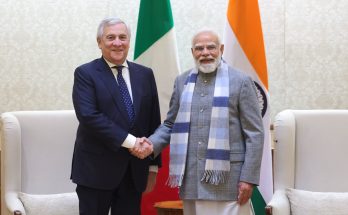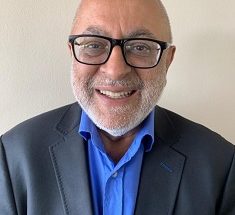Delhi Dialogue-V has emerged as a successful Track 1.5 venue for discussions between government representatives, Track II experts and business representatives on political, economic and security issues of interest to both India and ASEAN.
Today, Delhi Dialogue V assumes far greater significance since it is the first event after the ASEAN-India Commemorative Summit in December last year, where we enhanced the level of our relationship to a strategic partnership. The Vision Statement adopted at the Summit presents vast opportunities for stronger cooperationbetween ASEAN and India.
The theme for this year’s Delhi Dialogue, “India-ASEAN: Vision for Partnership and Prosperity” sums up our common aspiration in furthering our Strategic Partnership for collective peace, progress and prosperity.
India’s relations with the ASEAN member countries have seen a constant flow of ideas, culture, knowledge and practices. It has been a two-way civilizational connect and a history of trade, commerce, and educational exchanges. In modern times, we are not only able to rediscover it but also advance it to diverse areas for mutual benefit of peoples of India and ASEAN region.
In the recent times, as the global dynamics witness unprecedented changes and trends today, Asia is assuming new responsibilities commensurate with its capacities.
Political, economic and security structures are evolving globally, and, in a more pronounced manner, in East Asia. ASEAN and India are and will remain natural partners in defining their perspectives and addressing their common requirements of economic growth and prosperity.
India and ASEAN member countries share a vision of a peaceful, prosperous and resurgent Asia, which contributes to global peace and security. We share a dynamic economic space, which houses a quarter of humanity, and has a combined GDP of USD 3.8 trillion. We have put in place the Free Trade Agreement on trade in Goods in 2009 and have now concluded negotiations on the FTA on Services and Investment, which will help create greater synergy between our people, our industry and capacities.
ASEAN-India trade has been growing at over 22% during the last few years, and as much as 37% in 2011-12, which helped cross the target mark of USD 70 billion last year, ahead of time. We are now striving for the target of USD 100 billion by 2015 for ASEAN-India trade. As we look to the future, we must empower our youth across the spectrum of higher education, practical skills and vocational training, oriented to trade and technological advancement.
We have simultaneously resolved to meet non-traditional challenges and safeguard our collective politico-security environment, important for smooth flow of raw materials, merchandise and energy supplies. ASEAN-India engagement is proceeding well in the East Asia Summit, ASEAN Regional Forum, ADMM+ and the Expanded ASEAN Maritime Forum, which are important initiatives for evolving an open and inclusive regional architecture. We continue to support ASEAN’s central role in this regional architecture.
International terrorism, transnational organized crime, money laundering, drug-trafficking, information and cyber security issues are today demanding greater collaboration of effort by the international community. With repercussions for global and regional security, these issues require new, innovative solutions that can remain ahead of the growing complexity in these issues.
Brainstorming and finding synergy of interest and effort in these areas is all the more important when we consider the global economic situation. The economic crisis of 2008-09 continues to persist. Our hitherto resilient economies are getting compounded by the Eurozone crisis. Our rates of growth have depressed but are still healthy and respectable. ASEAN member countries and India continue to be growth centres in Asia, widely expected to lead the global economy out of the ongoing economic crisis.
Connectivity with ASEAN – geographical, institutional, or people-to-people, is a strategic priority for India. Relevant mechanisms established under the ASEAN-India framework to further connectivity, including some at Ministerial level, have been held during the Commemorative year.
India-Myanmar-Thailand Trilateral Highway project is progressing well. Route alignments for extending this Highway to Cambodia, Lao PDR and Vietnam need to be pursued further. The Mekong-India Economic Corridor, which will connect the industrial and freight corridors in India with the production networks in the Mekong region through the Chennai-Dawei sea link and the land connectivity to our Northeast, will have a beneficial effect on all our economies. These connectivity projects are capital intensive and we need to think of innovative means of financing them. Public Private Partnership is one such method, but there are several other as well, which I am sure would be discussed at tomorrow’s session on connectivity.
In this digital age, we also need think of virtual networks as a way forward for connecting the region. We have welcomed the ASEAN Information and Communications Technology (ICT) Master Plan 2015 and also the efforts to strengthen ASEAN-India Connectivity in ICT. As a beginning, we are exploring capacity building programmes and sharing best practices in technological development and policy regulations related to e-connectivity.
We support the Initiative for ASEAN Integration (IAI) so as to contribute to the ASEAN vision of an ASEAN Community by 2015. As integration within ASEAN proceeds, it is also important that integration between ASEAN and India progress apace. We have already seen some traction on this as the 6th East Asia Summit called for a “Connectivity Master Plan Plus” which would expand Connectivity beyond ASEAN.
We can bring about progress and shared prosperity only when the people of ASEAN and India are able to co-author Asia’s economic growth and resurgence. I would like to hear recommendations tomorrow for making geographic borders open to trade and investment and the movement of professionals and experts. We will be continuing our capacity building emphasis in the ASEAN India strategic partnership.
Development of effective energy systems, ensuring energy access utilizing all forms of energy to all the sections of population, promotion of energy efficiency technologies and use of renewable energy should see urgent prioritization on our cooperative calendar. The meetings held for the first time by my colleagues last year with their ASEAN counterparts in environment and renewable energy took cognizance of this. To my mind, the current predicament on these issues call for a sharing of expertise and knowledge, capacities and technology, a conviction that India has subscribed to for the last 65 years.
I am confident your deliberations will come up with recommendations on transforming the vision of our Leaders into reality, thus furthering the ASEAN-India strategic partnership to the next high level.
(This is the edited text of keynote address by India’s External Affairs Minister Salman Khurshid at the Inaugural Session of Delhi Dialogue-V in New Delhi February 19. The dialogue was organized by the Indian Council of World Affairs (ICWA), the Federation of Indian Chambers of Commerce and Industry (FICCI), the SAEA Research Group of Singapore, Institute for Defence Studies and Analyses (IDSA), as well as the Economic Research Institute (ERIA) in Jakarta).
Author Profile
- India Writes Network (www.indiawrites.org) is an emerging think tank and a media-publishing company focused on international affairs & the India Story. Centre for Global India Insights is the research arm of India Writes Network. To subscribe to India and the World, write to editor@indiawrites.org. A venture of TGII Media Private Limited, a leading media, publishing and consultancy company, IWN has carved a niche for balanced and exhaustive reporting and analysis of international affairs. Eminent personalities, politicians, diplomats, authors, strategy gurus and news-makers have contributed to India Writes Network, as also “India and the World,” a magazine focused on global affairs.
Latest entries
 India and the WorldNovember 26, 2025G20@20: Africa’s Moment – The Once and Future World Order
India and the WorldNovember 26, 2025G20@20: Africa’s Moment – The Once and Future World Order DiplomacyOctober 4, 2025UNGA Resolution 2758 Must Not Be Distorted, One-China Principle Brooks No Challenge
DiplomacyOctober 4, 2025UNGA Resolution 2758 Must Not Be Distorted, One-China Principle Brooks No Challenge India and the WorldJuly 26, 2025MPs, diplomats laud Operation Sindoor, call for national unity to combat Pakistan-sponsored terror
India and the WorldJuly 26, 2025MPs, diplomats laud Operation Sindoor, call for national unity to combat Pakistan-sponsored terror India and the WorldJuly 25, 2025When Fire Ends, Diplomacy Begins
India and the WorldJuly 25, 2025When Fire Ends, Diplomacy Begins







